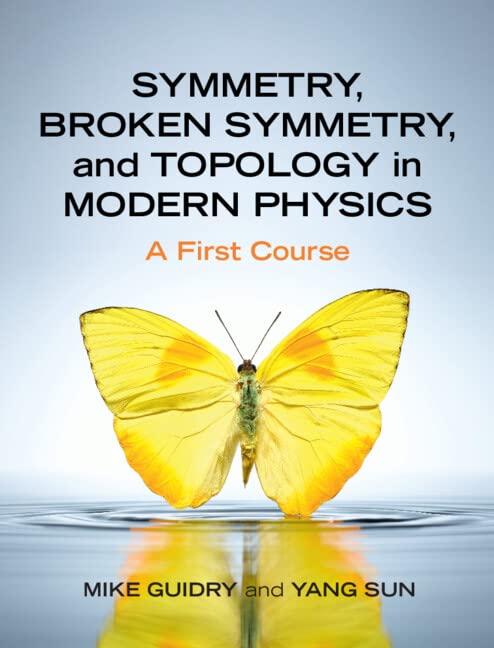Demonstrate the relationship between the groups (mathrm{SO}(3)) and (mathrm{SU}(2)) as follows. (a) Associate each 3D euclidean coordinate
Question:
Demonstrate the relationship between the groups \(\mathrm{SO}(3)\) and \(\mathrm{SU}(2)\) as follows.
(a) Associate each 3D euclidean coordinate \(\boldsymbol{x}=\left(x_{1}, x_{2}, x_{3}\right)\) with a \(2 \times 2\), traceless, hermitian matrix \(X\) through the map \(X=\sigma_{i} x_{i}\), where the \(\sigma_{i}\) are the Pauli matrices of Eq. (3.11). Evaluate the matrix \(X\) explicitly and show that \(\operatorname{det} X=-|\boldsymbol{x}|^{2}\).
(b) Let \(U\) be an arbitrary \(\mathrm{SU}(2)\) matrix that induces a linear transformation \(X \rightarrow X^{\prime}=U X U^{-1}\) on \(X\). Prove that if (as assumed) \(X\) is hermitian and traceless, so is \(X^{\prime}\).
(c) Argue that because of the properties derived above, \(X^{\prime}\) is defined by the expansion \(X^{\prime}=\sigma_{i} x_{i}^{\prime}\), and that \(\operatorname{det} X^{\prime}=\operatorname{det} X\).
(d) Use results (a)-(c) to show that the SU(2) transformation \(X \rightarrow X^{\prime}=U X U^{-1}\) induces an \(\mathrm{SO}(3)\) transformation in 3D euclidean space. Hint: Preservation of squared euclidean length \(\left|x^{2}\right|\) is a defining characteristic of an \(\mathrm{SO}(3)\) transformation.
(e) Argue that the mapping of \(U \in \mathrm{SU}(2)\) to an element of \(\mathrm{SO}(3)\) established above is \(2: 1\) because two different \(\mathrm{SU}(2)\) transformations \(U\) can give the same \(X^{\prime}\). Is the sign of \(U\) determined by the equations that you have derived?
Step by Step Answer:

Symmetry Broken Symmetry And Topology In Modern Physics A First Course
ISBN: 9781316518618
1st Edition
Authors: Mike Guidry, Yang Sun





